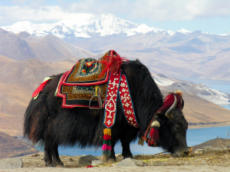New to science: March 2016
Posted on March 30, 2016 by Anand Jagatia
Each month, the Microbiology Society publishes the International Journal of Systematic and Evolutionary Microbiology (IJSEM), which details newly discovered species of bacteria, fungi and protists. Here are a few of the new species that have been discovered and the places they’ve been found. The full papers are available to journal subscribers, but the abstracts are free to read.

Spring is sprung! Easter is behind us and the clocks have gone forward. The latest issue of IJSEM describes plenty of freshly discovered microbes, and we’ve selected a few of the highlights.
Scientists from Russia and the USA have isolated a hyperthermophilic archaeon from a hot spring in the Russian Far East. Thermogladius calderae was observed to grow between 80–95ºC and is named after the word ‘caldera’, which is a kind of volcanic crater.
In the animal world, Bifidobacterium eulemuris is a new species of Actinobacteria
obtained from the faeces of black lemurs. A team of scientists from Italy and Malta made the discovery, adding to research on the diversity of bacterial species in primate microbiomes.
Sea squirts are marine invertebrates that feed by filtering tiny plankton and nutrients out of seawater. The golden sea squirt is a source of a novel bacterium, Tenacibaculum ascidiaceicola, which was isolated by researchers from South Korea.
Elsewhere in the oceans, the proteobacterium Pseudahrensia todarodis has been discovered in the gut of a Japanese flying squid. These squid are remarkable creatures – they swim in shoals and are able to ‘fly’ by propelling themselves out of the ocean using a jet of high pressure water. They can then glide for over 30 metres by spreading out their fins and tentacles.
There have been some interesting finds from food this month too. Bacillus piscicola wasisolated from Thai fish sauce by researchers in Thailand and Japan. The species is halophilic, being able to survive in the high salt concentrations found in fish sauce.
Raw milk has also yielded some new species of microbe. A Chinese team of researchers has isolated the bacterium Paenibacillus bovis from raw yak milk collected in Tibet. And scientists from Germany have discovered two new Pseudomonas species in the microbiota of raw cow’s milk: P. helleri and P. weihenstephanensis.
Finally for this post, a team of microbiologists from France and Senegal have isolated the species Mobilisporobacter senegalensis from shea cake, a waste material from the production of shea butter. Shea cake is rich in energy and proteins, and could be used for things like livestock feed if bacterial species are found that can detoxify it.
